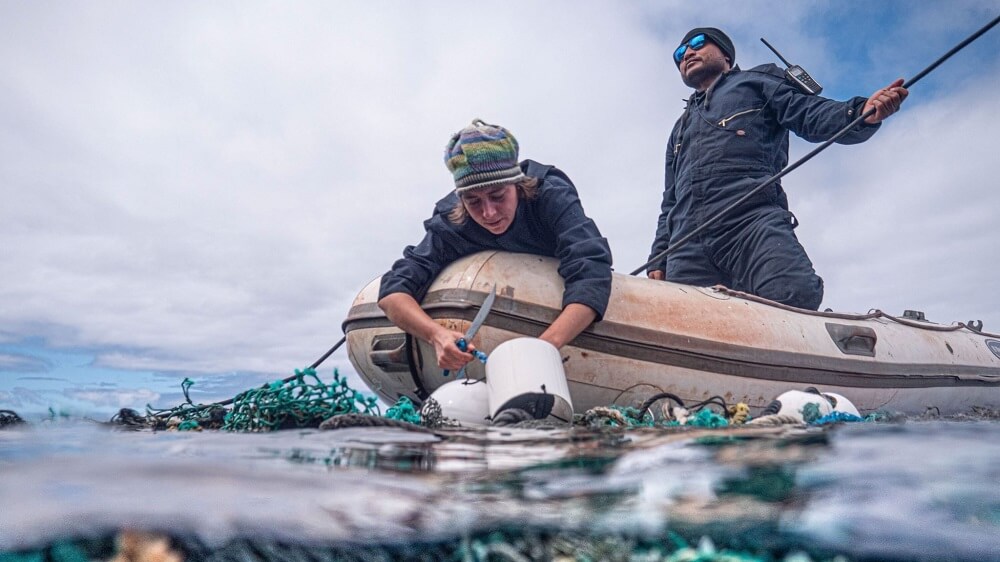On a Tuesday morning in late June, a ship pulled into Pier 29 in Honolulu from the largest-ever ocean plastic clean-up.
The Ocean Voyages Institute (OVI), a Sausalito, California-based ocean conservation nonprofit, collected 103 tons of plastic pollution from the North Pacific Subtropical Convergence Zone, better known as the Great Pacific Garbage Patch, on the 48-day expedition. The crew more than doubled the amount of trash collected from last year.
Ghost Gear and Microplastics
According to the OVI, the clean-up pulled in mostly consumer plastics and ghost gear. A 2018 study revealed that these discarded nets and other fishing equipment make up nearly half of ocean plastic pollution. It poses a threat to marine life including sea turtles, whales, dolphins, and even reefs.
Experts estimate that the Great Pacific Garbage Patch is roughly 1.6 million square kilometers or more than double the size of Texas. Located halfway between California and Hawaii, the patch is not only made up of large debris but also microplastics. In contrast to ghost gear, the effects of microplastics emerge over time.
“The oceans can’t wait for these nets and debris to break down into microplastics,” Mary Crowley, founder and executive director of the OVI, said in a statement. “which impair the ocean’s ability to store carbon and toxify the fragile ocean food web.”
We removed over 103 tons (206,000 pounds) of plastic in the largest at-sea cleanup in the North Pacific Gyre to date!
Please follow, share and support us! It is individual donations that have made our work possible!https://t.co/Krrk6wgGJ2 pic.twitter.com/qp0uqOUvT1
— Ocean Voyages Institute (@oceancleanup) June 23, 2020
Scaling Up
The OVI had intended to go on a three-month expedition. But, it had to scale back the plan due to the impacts of COVID-19.
“We were very careful to keep the crew quarantined,” Crowley told the Honolulu Star-Advertiser. She added that they tested “any new crew members coming on board because we wanted to make sure the expedition was safe from a health perspective.”
Crowley hopes to make next year’s clean-up even bigger. “Our solutions are scalable,” she said. “And next year, we could have three vessels operating in the North Pacific Gyre for three months all bringing in large cargos of debris.”
Some of the trash collected will be donated to labs for testing and to artists for educational pieces. The majority will be shipped to Southern California to be made into building materials.


